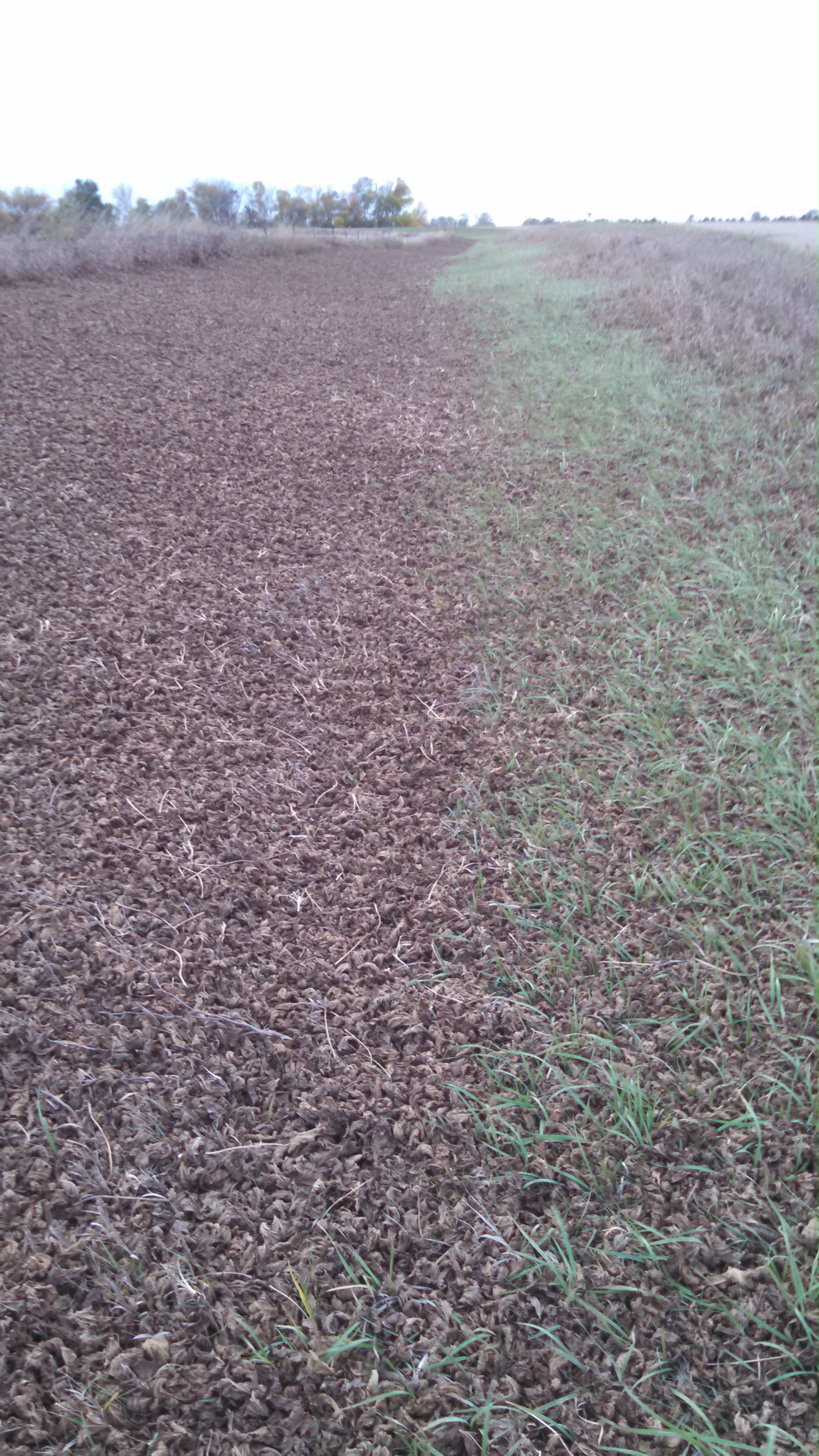The Windy Way
The high winds from last week sure got everyone’s attention. There were reports of near zero visibility, with no snow, fog, or rain to speak of, meaning that everything that blew was soil and debris/crop residue. This immediately prompted people to ask questions about how that day related to the dust bowl, particularly if you knew someone who grew up in that era.
That storm came at one of the worst possible times for our soils. We were already dry, and so the coarse textured soils were loose on top and ready to move. Soybean harvest was just wrapping up and corn harvest had begun so there was plenty of exposed soil and plant residue throughout the state. Figure 1 is a picture taken near Carrington where the wind actually created soybean drifts in the ditch. This particular drift was 3 feet high in some places. Even if a person avoided tilling soybean fields to preserve moisture, the exposed soils will be at risk of blowing all fall and winter where there is no protection.

Figure 1.
Unfortunately, even sturdier residue, such as wheat and barley stubble, was also susceptible to the wind. If you have winter wheat planted this fall, you should be checking that. We had instances of winter wheat and winter rye where our stand was significantly reduced due to the wind. These cereals were planted into barley stubble, but you could still see that the wind had blown away some of the soil that covered the seeds in the furrow, and the plants along with it. Beyond that, winter cereals certainly sustained “sandblasting” damage from the soil particles shooting through the air that day. The real concern is whether the crown is still intact in the ground, and if it is intact, how well it will survive exposure to more wind, drought, and cold temperatures throughout the fall and winter.
To end with, here are some interesting facts about wind:
- Wind turbines are one of the few power sources that don’t use water.
- One of the biggest drivers of wind is the heat difference between the equator and the north/south pole.
- Australia holds the world record for wind speed at 253 mph, though I think my house must hold the second highest record.
- Wind chill essentially describes the rate of temperature change that an object experiences in the open.
And finally,
- How would you describe a dust storms’ sense of humor?.......very dry.
Mike Ostlie
Research Agronomist


